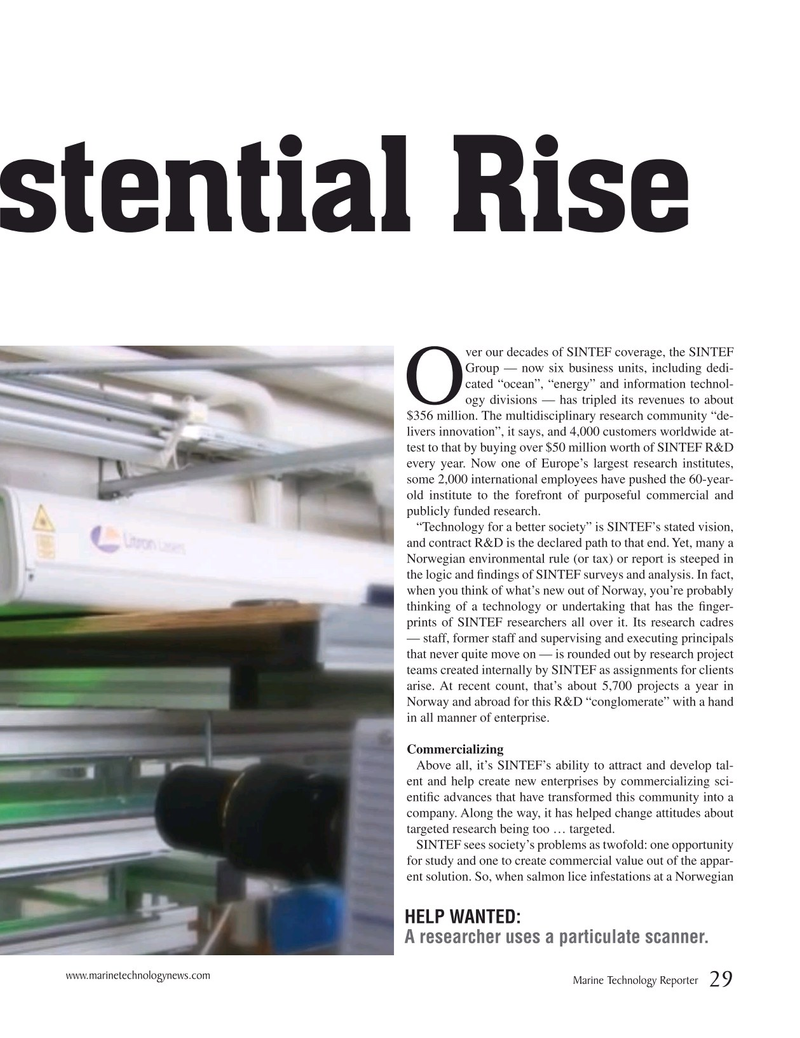
Page 29: of Marine Technology Magazine (October 2019)
Ocean Observation: Gliders, Buoys & Sub-Surface Networks
Read this page in Pdf, Flash or Html5 edition of October 2019 Marine Technology Magazine
istential Rise ver our decades of SINTEF coverage, the SINTEF
Group — now six business units, including dedi- cated “ocean”, “energy” and information technol-
Oogy divisions — has tripled its revenues to about $356 million. The multidisciplinary research community “de- livers innovation”, it says, and 4,000 customers worldwide at- test to that by buying over $50 million worth of SINTEF R&D every year. Now one of Europe’s largest research institutes, some 2,000 international employees have pushed the 60-year- old institute to the forefront of purposeful commercial and publicly funded research. “Technology for a better society” is SINTEF’s stated vision, and contract R&D is the declared path to that end. Yet, many a
Norwegian environmental rule (or tax) or report is steeped in the logic and ? ndings of SINTEF surveys and analysis. In fact, when you think of what’s new out of Norway, you’re probably thinking of a technology or undertaking that has the ? nger- prints of SINTEF researchers all over it. Its research cadres — staff, former staff and supervising and executing principals that never quite move on — is rounded out by research project teams created internally by SINTEF as assignments for clients arise. At recent count, that’s about 5,700 projects a year in
Norway and abroad for this R&D “conglomerate” with a hand in all manner of enterprise.
Commercializing
Above all, it’s SINTEF’s ability to attract and develop tal- ent and help create new enterprises by commercializing sci- enti? c advances that have transformed this community into a company. Along the way, it has helped change attitudes about targeted research being too … targeted.
SINTEF sees society’s problems as twofold: one opportunity for study and one to create commercial value out of the appar- ent solution. So, when salmon lice infestations at a Norwegian
HELP WANTED:
A researcher uses a particulate scanner. www.marinetechnologynews.com
Marine Technology Reporter 29
MTR #8 (18-33).indd 29 10/8/2019 10:05:16 AM

 28
28

 30
30
